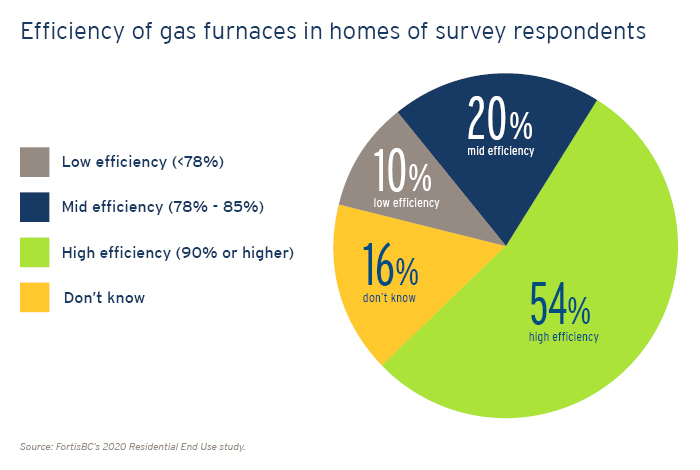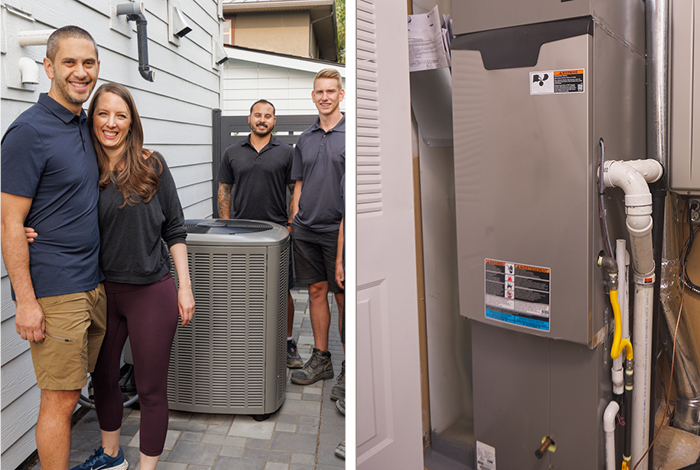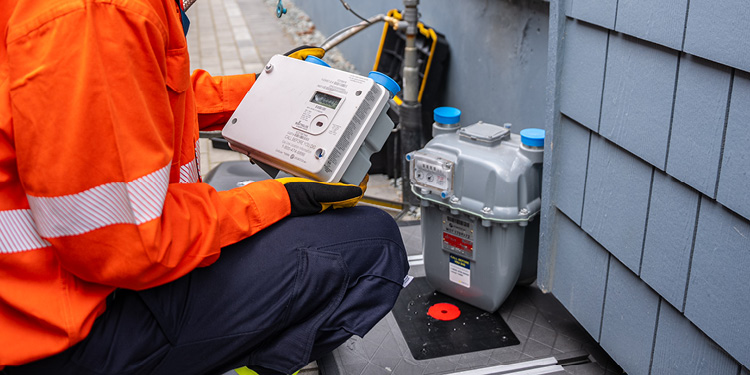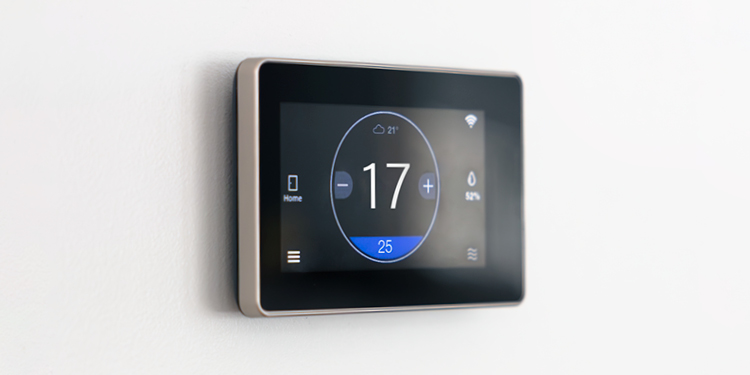The costly truth about your old furnace
October 9, 2020
Updated: January 20, 2025
Heating likely accounts for more than half the energy you use in your home1, so what you don’t know about your furnace could be costing you—a lot.
Many homes in B.C. still have older, less efficient furnaces, and a good portion of homeowners don’t actually know how efficient their furnace is. We conducted a survey of nearly 5,000 residential customers in B.C.2 and found that 30 per cent of homes heated with a gas furnace were using a low or mid-efficiency model. A further 16 per cent of people didn’t know the efficiency of their home’s furnace.

Why does furnace efficiency matter?
If your home was built before 1990, there’s a good chance it has a standard-efficiency furnace which could be as little as 60 per cent efficient. That means even if it was installed correctly and well-maintained, it will return only 60 units of heat for every hundred units of energy it uses.
That’s like buying a bag of 10 apples and throwing four away.
That also means 40 cents of every dollar spent heating your home could be lost through the exhaust. Crazy, right?
Mid-efficiency gas furnaces are common in homes built between 1990 and 2010. These are significantly better at 78 to 82 per cent efficiency, but that still throws at least two of your 10 good apples on the compost heap.
In contrast, high-efficiency furnaces are 95 to 98 per cent efficient and are now required for new construction projects and furnace replacements.

Shane and Colleen Sonderman (left) enjoy their new heat pump, while high-efficiency furnaces can also help you reduce bills and lower associated carbon emissions.
Modern gas heating options like dual fuel systems are demonstrating efficiencies even greater than 100 per cent. How do you like them apples?
Rebates make it easier to save energy and money
Whether you have an old or new furnace, we recommend investing in upgrades that help keep heat inside your home, such as new insulation and windows and doors. Luckily, we’ve got rebates to make those upgrades easier. If you install two or more eligible upgrades from the Home Renovation Rebate Program—such as a window and insulation—you could also get a $350 bonus.
Did you know?
AFUE is an abbreviation for annual fuel utilization efficiency, which is a measure of how efficiently your furnace can use its fuel. The more efficient your furnace, the more heat you will get per unit of fuel. It’s a good term to know when you’re evaluating your furnace options and working with a gas contractor.
1Source: National Resources Canada, Office of Energy Efficiency, Comprehensive Energy Use Database, Residential Sector, British Columbia, Table 2, Secondary Energy Use Shares, 2022.
2Source: FortisBC’s 2022 Residential End Use Survey, page 60.



